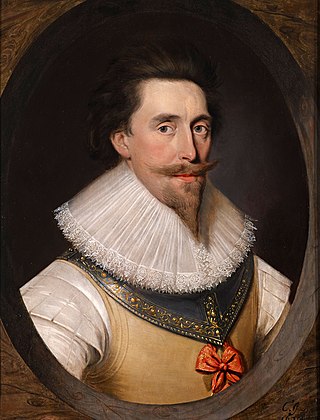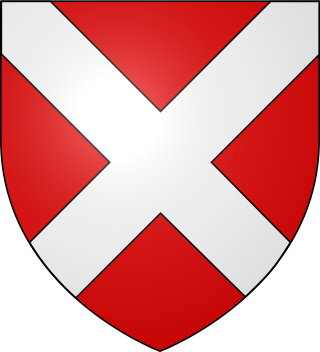
Ralph Neville, 1st Earl of WestmorlandEarl Marshal, was an English nobleman of the House of Neville.

Earl of Westmorland is a title that has been created twice in the Peerage of England. The title was first created in 1397 for Ralph Neville. It was forfeited in 1571 by Charles Neville, 6th Earl of Westmorland, for leading the Rising of the North. It was revived in 1624 in favour of Sir Francis Fane, whose mother, Mary Neville, was a descendant of a younger son of the first Earl. The first Earl of the first creation had already become Baron Neville de Raby, and that was a subsidiary title for his successors. The current Earl holds the subsidiary title Baron Burghersh (1624).
The title Baron Bergavenny was created several times in the Peerage of England and once in the Peerage of Great Britain, all but the first being baronies created by error. Abergavenny is a market town in South East Wales with a castle established by the Norman lord Hamelin de Balun c. 1087.

Anne of Gloucester, Countess of Stafford was the eldest daughter and eventually sole heiress of Thomas of Woodstock, 1st Duke of Gloucester, by his wife Eleanor de Bohun, one of the two daughters and co-heiresses of Humphrey de Bohun, 7th Earl of Hereford, 6th Earl of Essex (1341–1373) of Pleshey Castle in Essex.

Baron Wake of Liddell is an abeyant title in the Peerage of England. It was created in 1295 for John Wake. It has been in abeyance since 1408.

John Neville, 3rd Baron Neville, was an English peer, naval commander, and soldier. His second wife was Elizabeth Latimer who was the 5th Baroness Latimer in her own right.

The title of Baron Burghersh has been created three times in the Peerage of England.
John Neville, Baron Neville was an English nobleman who fought for the House of Lancaster during the Wars of the Roses. He belonged to a senior but impoverished branch of the Neville family of northern England, which had earlier been disinherited in favour of a younger branch headed by John's half–uncle, Richard, Earl of Salisbury. John Neville and his brothers spent several years feuding with Salisbury over the contested inheritance and, when the dynastic wars broke out, John sided with the Lancastrians whilst the junior Nevilles sided with the House of York.
The title Baron Latimer or Latymer has been created, by the definitions of modern peerage law, four times in the Peerage of England. Of these, one was restored from abeyance in 1913; one is forfeit; the other two are dormant, although their heir is well known.

The titles Baron Montacute or Baron Montagu were created several times in the Peerage of England for members of the House of Montagu. The family name was Latinised to de Monte Acuto, meaning "from the sharp mountain"; the French form is an ancient spelling of mont aigu, with identical meaning.

The title of Baron Poynings was created twice in the Peerage of England.

Francis Fane, 1st Earl of Westmorland, of Mereworth in Kent and of Apethorpe in Northamptonshire was an English landowner and politician who sat in the House of Commons between 1601 and 1624 and then was raised to the Peerage as Earl of Westmorland.
George Neville, 1st Baron Latimer or (Latymer) was an English nobleman.

Ralph Neville, 4th Earl of WestmorlandKG, was an English peer and soldier. He was the grandson of Ralph Neville, 3rd Earl of Westmorland, and the father of Henry Neville, 5th Earl of Westmorland.

The Neville or Nevill family is a noble house of early medieval origin, which was a leading force in English politics in the Late Middle Ages. The family became one of the two major powers in northern England and played a central role in the Wars of the Roses along with their rival, the House of Percy.

Ralph Neville, 2nd Earl of Westmorland was an English nobleman in northern England.
Ralph Neville, 3rd Earl of Westmorland was an English peer. He was the grandfather of Ralph Neville, 4th Earl of Westmorland.

Ranulph Neville, 1st Baron Neville of Raby Castle, County Durham, was an English nobleman and head of the powerful Neville family.

Sir John Neville was the eldest son of Ralph Neville, 1st Earl of Westmorland, a powerful nobleman in northern England, and Margaret Stafford, his first wife. As heir apparent to the earldom of Westmorland, he was styled 'Lord Neville'.
Sir Humphrey Neville of Brancepeth was an English knight and insurgent during the Wars of the Roses. A scion of the noble House of Neville, he was a son of Thomas Neville of Brancepeth and a nephew of Ralph Neville, 2nd Earl of Westmorland, and belonged to a senior but disinherited branch of the family. Humphrey and his family supported the House of Lancaster during the Wars of the Roses, while his junior but richer Neville cousins, chiefly represented by the famous Earl of Warwick, supported the House of York. Humphrey almost single-handedly led the Lancastrian resistance during the early years of the reign of Edward IV, until he was executed in 1469, in the king's presence.












